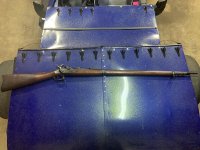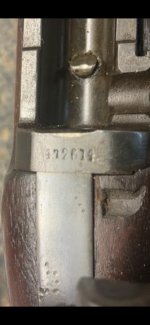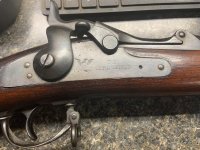An old friend gave this to me yesterday. I honestly don't know much about them other than they are antiques and fire the 45-70 cartridge,I believe this one is black powder. I was able to look up the serial number of this one (472614) and it appears to have been made in 1890?
Shiny bore,no cracks in the wood and metal bits all seem to be in great shape. It's awfully long at 52" overall and only fits in one of my gun safes.
Crude,but I'm sure it was effective.
Maybe some day Ill find some black powder 45-70 cartridges and fire it. Maybe not..
Shiny bore,no cracks in the wood and metal bits all seem to be in great shape. It's awfully long at 52" overall and only fits in one of my gun safes.
Crude,but I'm sure it was effective.
Maybe some day Ill find some black powder 45-70 cartridges and fire it. Maybe not..






